
Leblon: The Jewel of Rio de Janeiro
Experience the upscale charm of Leblon in Rio de Janeiro, where stunning beaches, gourmet dining, and vibrant nightlife await every discerning traveler.
Leblon is a charming and upscale neighborhood located in the southern zone of Rio de Janeiro. Known for its stunning beaches, vibrant nightlife, and sophisticated atmosphere, Leblon is a must-visit destination for tourists seeking a blend of relaxation and excitement. The beach in Leblon is one of the most beautiful in Rio, offering golden sands and clear blue waters. It's a perfect spot for sunbathing, swimming, or indulging in beach sports like volleyball. The beachside kiosks serve refreshing drinks and local snacks, making it easy to spend an entire day soaking up the sun. Leblon is also famous for its culinary scene. The neighborhood boasts a variety of restaurants, from traditional Brazilian eateries to international dining options. Rua Dias Ferreira is a particularly popular street, known for its array of high-quality restaurants and bars, where you can savor delicious meals and enjoy a lively atmosphere. For those who love shopping, Leblon offers a mix of high-end boutiques and charming local shops. The Shopping Leblon mall is a highlight, featuring a wide range of stores and a cinema. Additionally, the neighborhood is home to cultural attractions like the Teatro do Leblon, which hosts an array of performances and events. The nightlife in Leblon is vibrant and diverse, with many bars and clubs that stay open late into the night. Whether you prefer a quiet drink at a sophisticated bar or dancing the night away at a trendy club, Leblon has something to offer every nightlife enthusiast.
Local tips in Leblon
- Visit Rua Dias Ferreira for some of the best dining experiences in the neighborhood.
- Head to the beach early in the morning to avoid the crowds and enjoy a peaceful start to your day.
- Don't miss the sunset at Mirante do Leblon for breathtaking views of the coastline.
- Explore the local boutiques for unique souvenirs and high-quality Brazilian fashion.
Leblon: The Jewel of Rio de Janeiro
Leblon is a charming and upscale neighborhood located in the southern zone of Rio de Janeiro. Known for its stunning beaches, vibrant nightlife, and sophisticated atmosphere, Leblon is a must-visit destination for tourists seeking a blend of relaxation and excitement. The beach in Leblon is one of the most beautiful in Rio, offering golden sands and clear blue waters. It's a perfect spot for sunbathing, swimming, or indulging in beach sports like volleyball. The beachside kiosks serve refreshing drinks and local snacks, making it easy to spend an entire day soaking up the sun. Leblon is also famous for its culinary scene. The neighborhood boasts a variety of restaurants, from traditional Brazilian eateries to international dining options. Rua Dias Ferreira is a particularly popular street, known for its array of high-quality restaurants and bars, where you can savor delicious meals and enjoy a lively atmosphere. For those who love shopping, Leblon offers a mix of high-end boutiques and charming local shops. The Shopping Leblon mall is a highlight, featuring a wide range of stores and a cinema. Additionally, the neighborhood is home to cultural attractions like the Teatro do Leblon, which hosts an array of performances and events. The nightlife in Leblon is vibrant and diverse, with many bars and clubs that stay open late into the night. Whether you prefer a quiet drink at a sophisticated bar or dancing the night away at a trendy club, Leblon has something to offer every nightlife enthusiast.
Iconic landmarks you can’t miss
Mirante do Leblon
Experience breathtaking views of the Atlantic and Leblon Beach at Mirante do Leblon, a scenic spot that captures the essence of Rio de Janeiro's beauty.
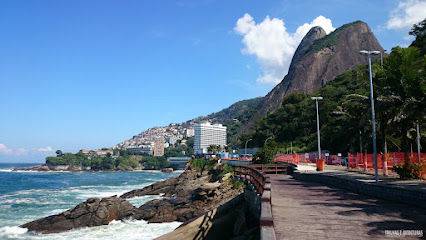
Leblon Beach
Explore the stunning Leblon Beach in Rio de Janeiro, a blend of natural beauty, vibrant culture, and luxury shopping amidst breathtaking views.

Praça Antero de Quental
Explore Praça Antero de Quental, a picturesque landmark in Leblon, blending nature, culture, and the vibrant spirit of Rio de Janeiro.
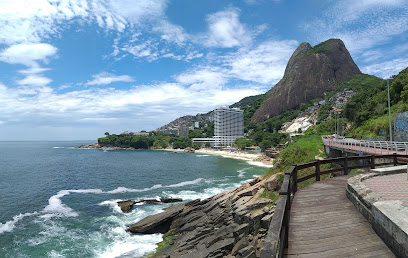
Parque Natural Municipal Dois Irmãos - Dois Cariocas - Sérgio Bernardes e Alfredo Sirkis
Discover the serene landscapes and breathtaking views at Parque Natural Municipal Dois Irmãos, a gem in the heart of Rio de Janeiro's Leblon neighborhood.

Praia do Leblon
Discover the stunning beauty and vibrant culture of Praia do Leblon, Rio's premier beach destination known for its golden sands and chic atmosphere.

Cidade do Leblon
Experience the elegance of Cidade do Leblon, a vibrant shopping and business center in the heart of Rio de Janeiro's upscale neighborhood.

Square Zózimo Barrosos do Amaral
Experience the vibrant culture and stunning coastal views at Square Zózimo Barrosos do Amaral in Rio de Janeiro's Leblon neighborhood.

Cazuza Statue
Discover the Cazuza Statue in Leblon, Rio de Janeiro - a heartfelt tribute to the legendary Brazilian musician and a cultural gem in the heart of the city.
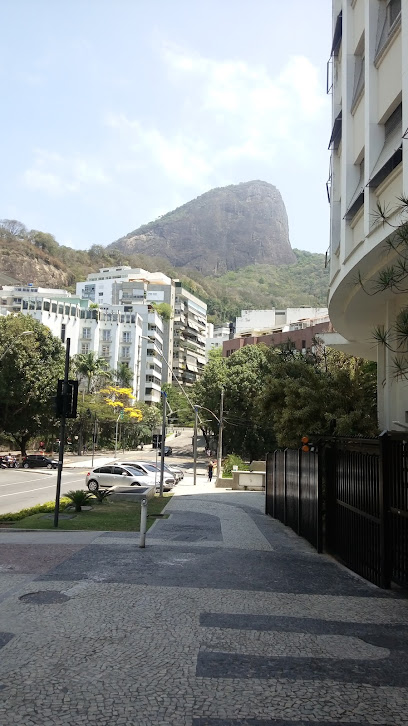
Obelisk Ipanema
Explore the Obelisk Ipanema, a historical landmark in Rio de Janeiro, where culture, history, and stunning views come together in vibrant Ipanema.
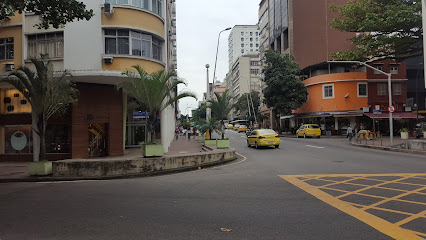
Rio de janeiro
Discover the vibrant bar scene of Rio de Janeiro, where breathtaking landscapes meet lively nightlife and authentic Brazilian culture.
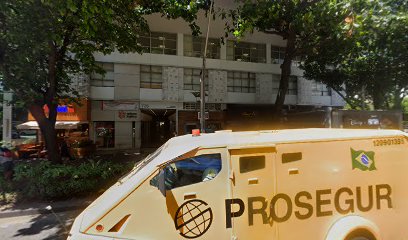
Unmissable attractions to see
Christ the Redeemer
Explore the majestic Christ the Redeemer, an iconic symbol of faith and a breathtaking view of Rio de Janeiro's stunning landscape.

Escadaria Selarón
Experience the vibrant artistry of Escadaria Selarón, a stunning mosaic staircase that embodies the rich cultural spirit of Rio de Janeiro.

Parque Lage
Discover the beauty of Parque Lage, an enchanting park in Rio de Janeiro that blends nature, art, and history, perfect for a relaxing day out.

Pedra do Arpoador
Discover the breathtaking beauty of Pedra do Arpoador, Rio de Janeiro's premier sunset spot with stunning ocean vistas and vibrant local culture.
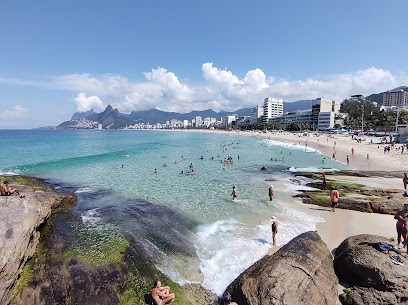
Praça General Osório
Discover Praça General Osório, Ipanema's vibrant square blending art, culture, and natural beauty in the heart of Rio de Janeiro.

Leblon Beach
Experience the breathtaking beauty of Leblon Beach, Rio de Janeiro's upscale coastal paradise, perfect for relaxation and vibrant local culture.

Parque Natural Municipal Dois Irmãos - Dois Cariocas - Sérgio Bernardes e Alfredo Sirkis
Discover the breathtaking beauty of Parque Natural Municipal Dois Irmãos, an urban oasis in Rio de Janeiro with stunning views and lush nature.

Praia do Leblon
Experience the stunning beauty and vibrant culture of Praia do Leblon, Rio de Janeiro's most luxurious beach destination.

Urubu Lookout
Discover the stunning panoramic views of Rio de Janeiro at Urubu Lookout, an ideal hiking destination for nature lovers and adventure seekers alike.

Natural Monument Archipelago Cagarras Islands
Experience the breathtaking beauty and diverse wildlife of the Cagarras Islands, a natural monument and national park off Rio de Janeiro's coast.

Monumento à Princesa Isabel, a Redentora
Discover the rich history of Brazil at the Monumento à Princesa Isabel in Copacabana, a stunning tribute to freedom and justice.

Praia de Ipanema
Experience the vibrant beach life at Praia de Ipanema, a cultural gem of Rio de Janeiro with stunning scenery and lively atmosphere.

Rio
Discover the lush beauty of Rio de Janeiro's park in Leblon, offering tranquility, outdoor fun, and a slice of local life amidst the city's vibrancy.

Essential places to dine
CT Boucherie
Discover the fusion of French cuisine and Brazilian barbecue at CT Boucherie in Leblon, Rio de Janeiro - a must-visit for food lovers.
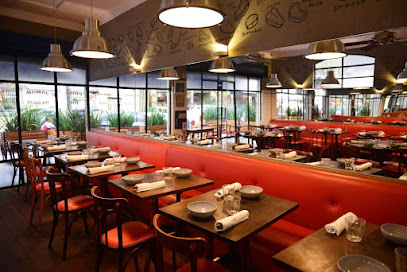
Sushi Leblon
Discover the exquisite fusion of traditional Japanese cuisine with local Brazilian flavors at Sushi Leblon in Rio de Janeiro's upscale neighborhood.
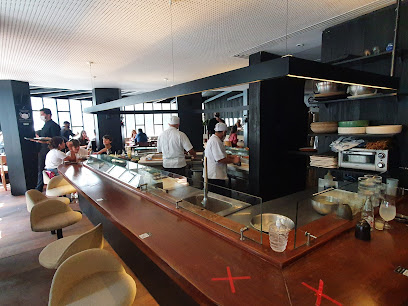
Giuseppe Grill Leblon
Discover the perfect fusion of Brazilian and Italian cuisine at Giuseppe Grill in Leblon - where every meal is an unforgettable culinary journey.
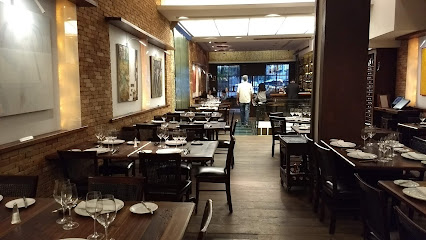
Filé do Lira
Experience authentic Brazilian flavors at Filé do Lira in Leblon - where every steak tells a story.
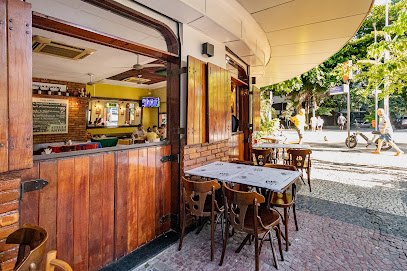
BB Lanches
Experience authentic Brazilian pastelaria at BB Lanches in Leblon - where every bite tells a story.
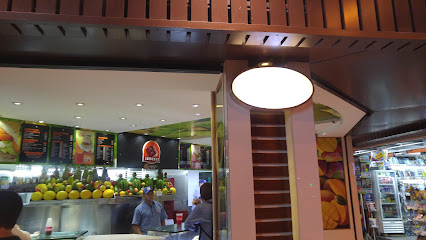
Degrau Restaurante
Savor authentic Brazilian flavors at Degrau Restaurante in Leblon - a family-friendly haven for seafood lovers!
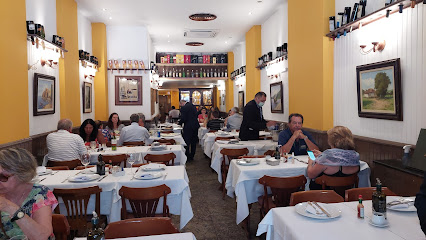
Nola
Experience authentic Italian flavors at Nola in Leblon – where every meal is a celebration of Mediterranean cuisine.
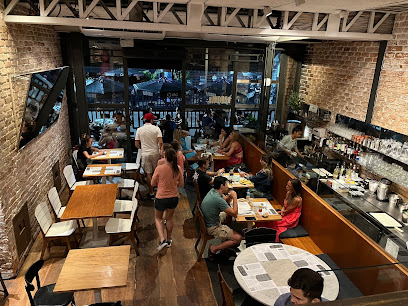
La Mole
Experience the best of Italian cuisine with a Brazilian twist at La Mole in Leblon - where every meal is a celebration of flavor.
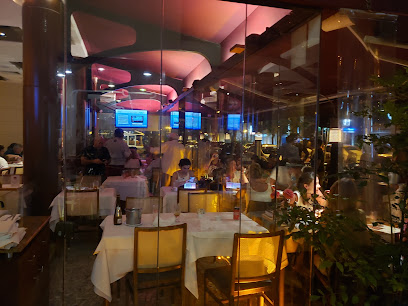
Massa + Ella
Discover the essence of Italian cuisine at Massa + Ella in Leblon—where gourmet pasta meets vibrant flavors in an elegant setting.

Le Vin Bistrô Rio | Leblon
Discover exquisite French cuisine and succulent steaks at Le Vin Bistrô in Leblon, Rio de Janeiro's premier dining destination.
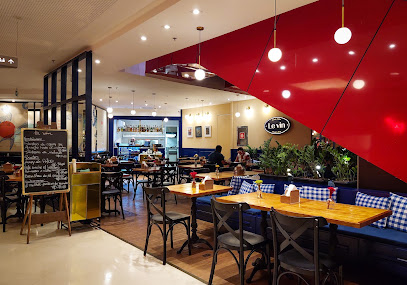
Markets, malls and hidden boutiques
Shopping Leblon
Experience luxury shopping and gourmet dining at Shopping Leblon, the premier shopping destination in Rio de Janeiro's upscale neighborhood.
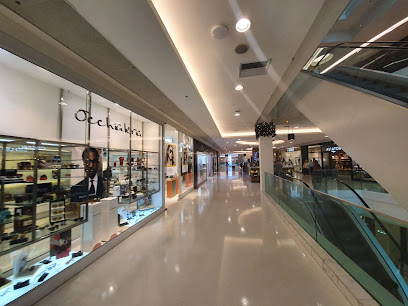
Rio Design Leblon
Explore luxury shopping and exquisite dining at Rio Design Leblon, the ultimate destination for style enthusiasts in Rio de Janeiro.

Oficina Reserva | Leblon
Discover Oficina Reserva in Leblon: a stylish men's clothing store featuring a bar and barber shop for a unique shopping experience in Rio de Janeiro.
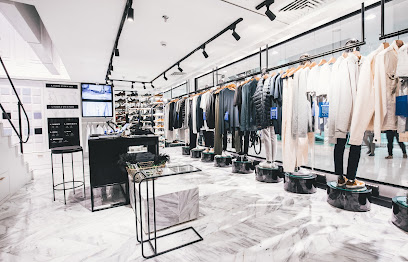
Moncloa Tea Boutique
Explore the exquisite flavors of Moncloa Tea Boutique in Leblon, where exceptional teas and unique gifts come together to create a memorable experience.
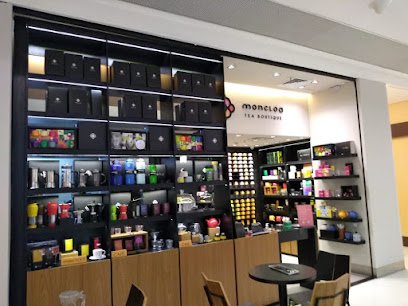
Shoulder
Explore the chic world of women's fashion at Shoulder in Leblon, Rio de Janeiro, where style meets Brazilian flair.
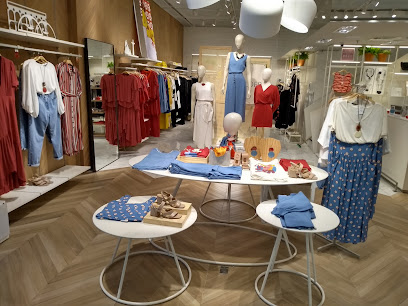
Garage Rio- Shopping Leblon
Explore vibrant women's fashion at Garage Rio - Shopping Leblon, a chic destination in Rio de Janeiro for the modern woman.
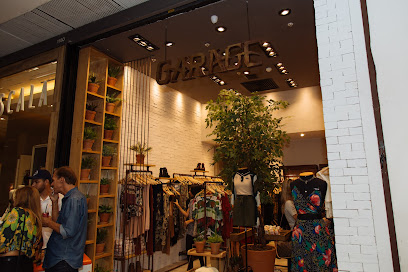
Le Lis - Shopping Leblon
Discover Le Lis in Shopping Leblon, a premier destination for couture clothing, elegant dresses, and fashionable accessories in the heart of Rio de Janeiro.
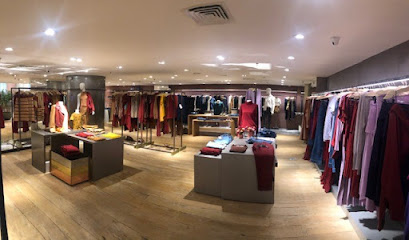
Leblon
Experience luxury shopping and exquisite dining at Leblon Shopping Mall in Rio de Janeiro's exclusive neighborhood.
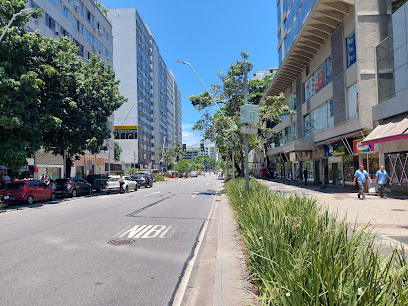
Aesop
Discover Aesop in Rio de Janeiro's Leblon: a luxurious destination for high-quality skincare, cosmetics, and perfumes that prioritize sustainability.
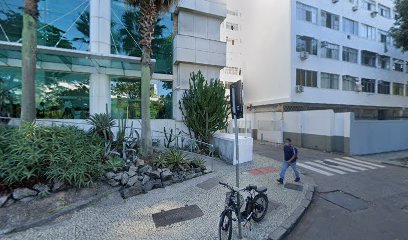
Gaoli Beach Couture
Explore Gaoli Beach Couture in Leblon for exclusive women's fashion that captures the vibrant spirit of Rio de Janeiro's beach lifestyle.
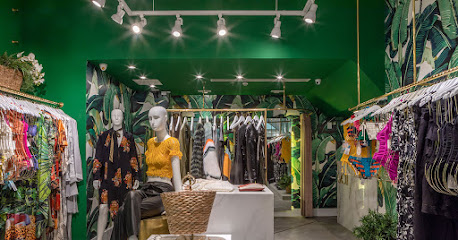
Essential bars & hidden hideouts
Boteco Belmonte
Experience the vibrant flavors of Brazil at Boteco Belmonte in Leblon, a culinary hotspot offering delicious food and drinks in a lively atmosphere.
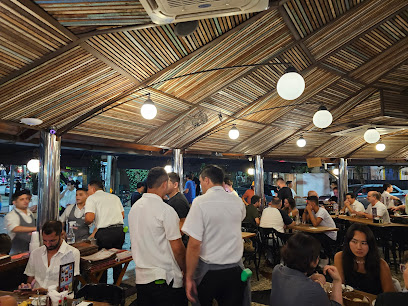
Jobi
Discover the lively charm of Jobi, a premier bar in Leblon offering exquisite cocktails and a vibrant atmosphere for unforgettable nights.
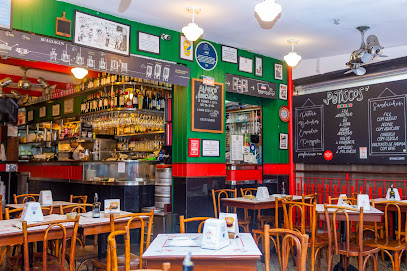
Bar Bracarense
Discover the vibrant heart of Rio de Janeiro at Bar Bracarense, where great food and drinks meet lively Brazilian nightlife.
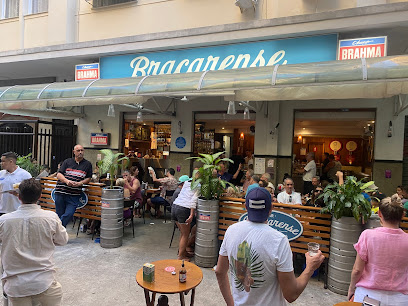
Bar do Bacana
Discover the vibrant flavors and lively nightlife at Bar do Bacana in Leblon, Rio de Janeiro, a top spot for food and drinks.
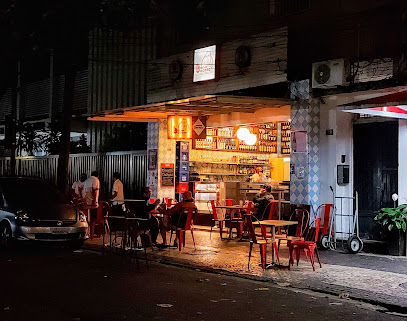
Veloso
Experience the vibrant atmosphere and authentic Brazilian flavors at Veloso, a premier bar and restaurant in the heart of Leblon, Rio de Janeiro.
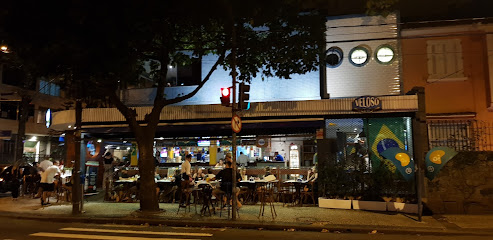
Brewteco
Discover Brewteco, a vibrant bar in Leblon, Rio de Janeiro, offering an extensive selection of craft beers and cocktails in a lively atmosphere.
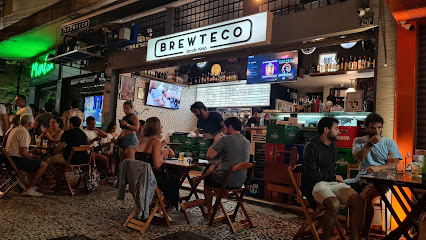
Bar colinda
Experience the vibrant nightlife at Bar Colinda, Leblon’s go-to spot for delicious cocktails and lively atmosphere in Rio de Janeiro.
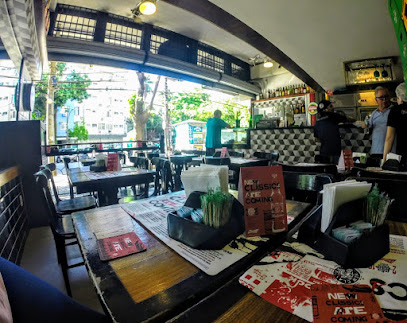
Liz Cocktail & Co
Experience the vibrant nightlife of Rio de Janeiro at Liz Cocktail & Co, a premier cocktail bar in Leblon, known for its creative drinks and lively atmosphere.
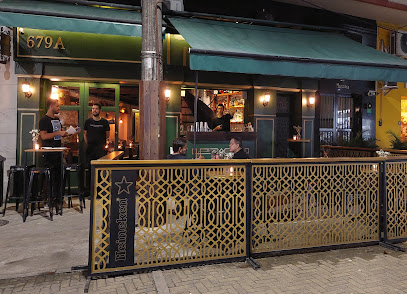
Bar Para Pedro
Discover the lively spirit of Rio de Janeiro at Bar Para Pedro, a pub and café offering authentic Brazilian cuisine and a vibrant atmosphere.
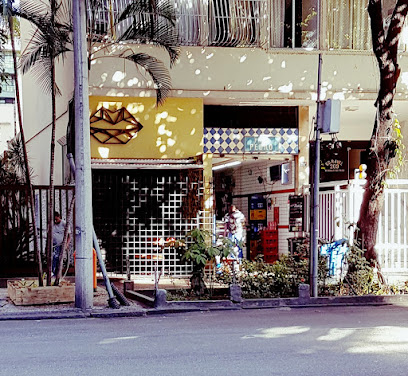
Leblon Prime 191
Discover the ultimate blend of sports, adventure, and nightlife at Leblon Prime 191, a vibrant bar in Rio de Janeiro's chic Leblon neighborhood.

Local Phrases
-
- HelloOlá
[oh-lah] - GoodbyeAdeus
[ah-deh-oos] - YesSim
[seem] - NoNão
[now] - Please/You're welcomePor favor/De nada
[por fah-vohr/deh nah-dah] - Thank youObrigado/Obrigada
[oh-bree-gah-doh/oh-bree-gah-dah] - Excuse me/SorryCom licença/Desculpe
[kohm lee-sen-sah/deh-skool-peh] - How are you?Como vai?
[koh-moh vah-ee] - Fine. And you?Bem. E você?
[beng. eh voh-seh] - Do you speak English?Você fala inglês?
[voh-seh fah-lah een-gleh-s] - I don't understandNão entendo
[now een-ten-doh]
- HelloOlá
-
- I'd like to see the menu, pleaseEu gostaria de ver o cardápio, por favor
[eh-oo goh-stah-ree-ah deh vehr oh kahr-dah-pee-oh, por fah-vohr] - I don't eat meatEu não como carne
[eh-oo now koh-moh kahr-nee] - Cheers!Saúde!
[sow-deh] - I would like to pay, pleaseEu gostaria de pagar, por favor
[eh-oo goh-stah-ree-ah deh pah-gahr, por fah-vohr]
- I'd like to see the menu, pleaseEu gostaria de ver o cardápio, por favor
-
- Help!Socorro!
[soh-koh-roh] - Go away!Vá embora!
[vah ehm-boh-rah] - Call the Police!Chame a polícia!
[shah-meh ah poh-lee-see-ah] - Call a doctor!Chame um médico!
[shah-meh oom meh-dee-koh] - I'm lostEstou perdido/perdida
[eh-stoh pehr-dee-doo/pehr-dee-dah] - I'm illEstou doente
[eh-stoh doo-en-teh]
- Help!Socorro!
-
- I'd like to buy...Eu gostaria de comprar...
[eh-oo goh-stah-ree-ah deh kohm-prahr] - I'm just lookingEstou apenas olhando
[eh-stoh ah-peh-nahs oh-lahn-doh] - How much is it?Quanto custa?
[kwan-toh koos-tah] - That's too expensiveIsso é muito caro
[ee-soh eh mwitoo kah-roo] - Can you lower the price?Você pode baixar o preço?
[voh-seh poh-deh bah-ee-shahr oh preh-soh]
- I'd like to buy...Eu gostaria de comprar...
-
- What time is it?Que horas são?
[keh oh-rahz sow-oo] - It's one o'clockÉ uma hora
[eh oo-mah oh-rah] - Half past (10)Meia hora (10)
[may-ah oh-rah (dhees)] - MorningManhã
[mahn-yah] - AfternoonTarde
[tahr-deh] - EveningNoite
[noy-chee] - YesterdayOntem
[ohn-tehn] - TodayHoje
[oh-zheh] - TomorrowAmanhã
[ah-mahn-yah] - 1Um
[oom] - 2Dois
[doh-ees] - 3Três
[trehs] - 4Quatro
[kwah-troo] - 5Cinco
[seen-koh] - 6Seis
[say-ees] - 7Sete
[seh-teh] - 8Oito
[oy-toh] - 9Nove
[noh-veh] - 10Dez
[dehz]
- What time is it?Que horas são?
-
- Where's a/the...?Onde é o/a...?
[ohn-deh eh oh/ah] - What's the address?Qual é o endereço?
[kwahl eh oh ehn-deh-reh-soh] - Can you show me (on the map)?Você pode me mostrar (no mapa)?
[voh-seh poh-deh meh moh-strahr (noo mah-pah)] - When's the next (bus)?Quando é o próximo (ônibus)?
[kwahn-doh eh oh proh-kssee-moh (ohn-ee-boos)] - A ticket (to ....)Um bilhete (para ....)
[oom beel-yeh-teh (pah-rah)]
- Where's a/the...?Onde é o/a...?
History of Leblon
-
Leblon's history dates back to the colonial period of Brazil in the 16th century. Originally a rural area, it was part of the lands granted to Portuguese settlers. The name 'Leblon' is believed to have originated from the French word for 'the blond,' referencing the sandy beaches of the region. During the colonial era, it was primarily an agricultural zone with sugarcane plantations.
-
By the 19th century, Leblon began to transform into a more urbanized area, particularly after the establishment of the first railway in Rio de Janeiro, which improved access to the neighborhood. The influx of wealthy residents turned Leblon into a desirable location for affluent families, marking its evolution from a rural area to a burgeoning urban center.
-
The early 20th century saw Leblon emerge as a cultural hub, attracting artists, writers, and intellectuals. The neighborhood became known for its vibrant cultural scene, with theaters, galleries, and social clubs. This period also marked the construction of iconic buildings, including the famous 'Casa do Saber' and numerous art deco structures that still define the area today.
-
In the decades following World War II, Leblon underwent significant gentrification, further solidifying its status as one of Rio de Janeiro's most exclusive neighborhoods. High-end shopping, luxury apartments, and gourmet dining options flourished, attracting affluent residents and tourists alike. This transformation contributed to the area's reputation as a symbol of wealth and sophistication within the city.
-
In the 21st century, Leblon has continued to thrive as a cultural and social epicenter. The neighborhood hosts various art festivals, culinary events, and cultural programs that celebrate its rich heritage. Notable sites, such as the 'Praia do Leblon' and the 'Forte de Copacabana,' draw visitors, while local galleries and theaters provide a platform for contemporary artists and performers.
Leblon Essentials
-
Leblon is easily accessible from various neighborhoods in Rio de Janeiro. From Copacabana, you can take a short walk along the beach or hop on a bus that runs frequently along Avenida Atlântica. If you are coming from Ipanema, a pleasant 15-20 minute walk along the coastal promenade will take you directly to Leblon. For those coming from the city center, the metro is a convenient option; take Line 1 (the orange line) to the Antero de Quental station, which is a short walk from the neighborhood.
-
Leblon is a walkable neighborhood with many attractions within easy reach. You can use public buses that run along Avenida Ataulfo de Paiva and Avenida General San Martin. The metro is also a viable option, with the Antero de Quental station nearby. For a more local experience, consider renting a bicycle from one of the many bike-sharing programs available in the city. Taxis and ride-sharing services like Uber are widely used and can be a practical way to navigate the area.
-
Leblon is generally considered one of the safer neighborhoods in Rio, but it's still essential to remain vigilant. Avoid walking alone late at night, especially in less populated areas. While most tourist spots in Leblon are safe, areas nearby such as parts of Vidigal and some slums can have higher crime rates. Always keep your belongings secure and be cautious in crowded places.
-
In case of emergency, dial 190 for police assistance and 192 for medical emergencies. It's advisable to have travel insurance that covers emergency medical situations. The nearest hospital is Hospital Espanhol, located a short distance from Leblon. For non-urgent medical needs, pharmacies are plentiful in the area.
-
Fashion: Do dress casually but stylishly; beachwear is acceptable at the beach but cover up when visiting shops or restaurants. Religion: Do respect local customs; when visiting churches, dress modestly. Public Transport: Do be courteous and offer your seat to the elderly. Don’t eat or drink on public transport. Greetings: Do greet with a friendly 'Oi' and a smile; a handshake is also common. Eating & Drinking: Do try local dishes and enjoy the vibrant café culture. Don’t be loud or disruptive in restaurants, as it’s considered rude.
-
To experience Leblon like a local, visit the Feira de Artesanato de Ipanema on Sundays for handmade crafts and local food. Join locals for a game of beach volleyball on Leblon beach or enjoy a sunset at the Mirante do Leblon. Don't forget to try a 'pão de queijo' from a local bakery, and immerse yourself in the vibrant nightlife by visiting the bars and restaurants around Avenida Ataulfo de Paiva.
-
Brazilian culture is warm and friendly; it’s common to greet people with a kiss on the cheek, especially among women. When dining, it’s polite to wait for everyone to be served before starting your meal. Tipping is customary; rounding up the bill or leaving 10-15% is appreciated in restaurants.
-
Leblon is known for its diverse culinary scene. Don't miss out on trying local specialties such as 'feijoada' (a black bean stew with pork) and 'cachaça' (a sugarcane spirit). Visit the local markets for fresh fruit and street food options. Enjoying a late afternoon coffee or açaí bowl at a beachfront café is a must-do.
Nearby Cities to Leblon
-
Things To Do in São Paulo
-
Things To Do in Florianópolis
-
Things To Do in Brasília
-
Things To Do in Foz do Iguaçu
-
Things To Do in Puerto Iguazú
-
Things To Do in Hernandarias
-
Things To Do in Salvador
-
Things To Do in Encarnacion
-
Things To Do in Villarrica
-
Things To Do in Carmen del Parana
-
Things To Do in San Bernardino
-
Things To Do in Ypacarai
-
Things To Do in Aregua
-
Things To Do in Asuncion
-
Things To Do in Tacuarembó










